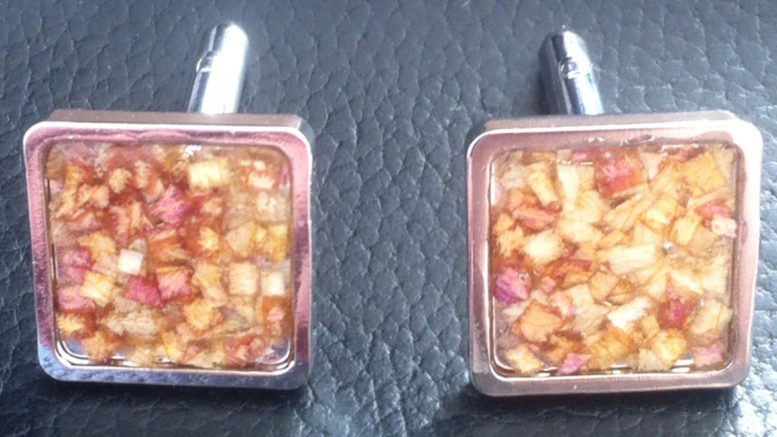My friend Chris reports on his experience as resin jeweller aimed at “anyone brave enough to try working with resin”:
Resin can be a wonderful material for preserving fragile natural objects and turning them into hard-wearing keepsakes and jewellery. And, compared with the equipment needed for working with metals, it’s easy to be a resin jeweller. But! As with any jewellery project, precision is absolutely crucial to getting a good result. Or any result – if you get it wrong, you will have to start all over again.
Set resin is created from two parts – the resin base, and a chemical hardener. Follow the manufacturer’s instructions PRECISELY, or, like me, your first few attempts at creating jewellery will just make sticky gloop. Usually it’s two parts resin to one part hardener, and here’s my top tip: make LOTS more resin mix than you actually need. The quantities used in jewellery are tiny – far too small for you to measure accurately. So, mixing a bigger quantity makes it easier to stick to the correct ratio of resin to hardener. Too much or too little hardener, and you get sticky gloop. Also, buy some plastic medicine measuring cups online to help you measure out the quantities accurately; they will more than pay for themselves in successful resin pieces.
My final two tips for resin success are: keep a control sample separate from your piece. You’ll be able to use the control sample to check if your resin is curing without having to disturb your piece while it sets. Lastly, resin cures quickly – it starts in minutes, and should be set the next day. If it is still runny 24 hours later, something has gone wrong. Here you just have to face the fact that it won’t ever set – just throw it away and start again!
